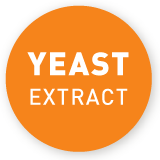Ever since the Life Reform Movement (Lebensreformbewegung), which began in the mid 19th century and rejected the urbanisation and materialism associated with industrialisation in favour of a “back to nature” lifestyle, there has been much debate about vegetarianism and its practicalities. As long ago as the 1920s, nutritional yeast and yeast extract were used in health food products as a substitute for the amino acids found in meat and the savoury, meaty taste. Even in those days, one of the main reasons for the use of yeast products and yeast extracts was their nutritional value. They were popular on account of being rich in B vitamins, valuable protein and minerals, while also providing that much-loved savoury, meaty taste.
This trend experienced a revival in the 1980s and 90s, when there was much debate in the flourishing organic food industry about how to add some savoury flavour to organic food. Nutritional yeast and yeast extract found wide acceptance, as they were considered a good way of enhancing a healthy, balanced diet.
Today, yeast extract is a standard ingredient in the preparation of food. Just like herbs and spices, this natural product adds flavour to sauces, bouillons, soups, vegetable dishes, meat dishes and ready-made meals as well as savoury snacks. In Britain, Australia and New Zealand, yeast extract is also very popular as a main ingredient in various vegetarian spreads that usually contain added salt, plant extracts and spices.



